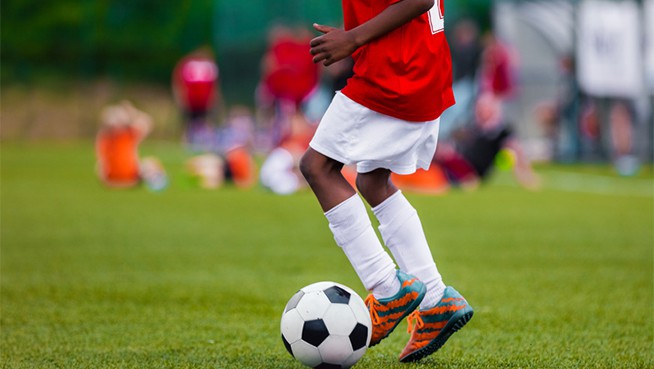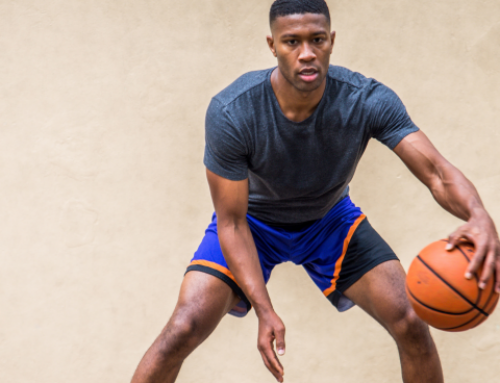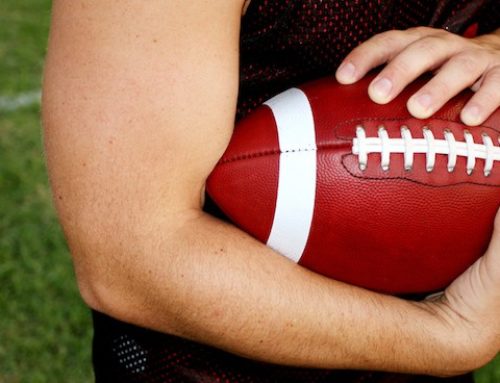Learn Basketball Layups, Part 7: Advanced Moves for Better Finishes at the Rim
The layup is arguably the easiest way to score in basketball. However, one of the biggest mistakes players make is practicing only a single variation of the basic layup. If you’ve only got one type of layup, you’re begging to be blocked by defenders who’ll read your game like a book.
There’s no excuse for having just one type of layup, especially since STACK’s series about basketball layups has already taught you the Overhand Layup, Underhand Layup, Power Layup, Backhand Layup, Middle Reverse Layup, and Backhand Reverse Layup.
So stop inviting your opponents to an on-court “block party.” Lets build off the basics to give you some unstoppable basketball layups that will help you score more in games.
RELATED: Build a Better Layup With These Basketball Speed Drills
Start with the Overhand Layup
The overhand layup is the most basic layup. All good coaches teach it, as they should, and by now you’re surely read our article on it. As stated in the video, I’m not going to rehearse the details, as I expect you to know all about it. This article is about layup variations that are not taught and are severely lacking in many players’ games.
Now on to the Finger Roll
If you learn a single layup variation from this article, let it be the finger roll. Compared to the basic underhand layup, the main benefit of the finger roll is that it allows you to reach with the entire length of your arm, giving you a few more feet of additional protection from the swipes of would-be shot-blockers.
Of course, the release is underhanded. This means it’s more difficult to consistently pull off compared to an overhand layup. However, mastering the finger roll will allow you to score in situations when the overhand layup wouldn’t work.
For inspiration, watch Stephen Curry. He is the absolute master of the finger roll. Every one of his games usually has a few finger roll layups.
RELATED: Two Drills to Develop Your Weak-Side Layup
Jump-Stop Layup
The jump-stop layup is more of a footwork variation. You pound the ball, hop with it, gather yourself, and go up strong.
The benefit of this this layup is that you’re controlled throughout the move, and you can put your whole body into finishing the shot. Even with defenders still in front of you, after the hop, chances are you have the strength for a solid jump to the rim. This allows you to shrug off most of the potential contact on the way up and still make the shot. (Make sure your dominance is known by yelling “And One!”)
The Reverse Layup
The reverse layup is a finisher all serious basketball players should know how to do. There are numerous benefits. Not only can you reach with your arm and get distance on the finish, you actually use the basket itself to protect your shot. As stated in the video, make sure to get the ball high on the glass. Too often, reverse layups bounce out due to an insufficient angle on the ball.
Additionally, faking a normal overhand layup and finishing on the other side of the glass with a reverse is a great way to score a few extra buckets per game. This is one of the main finishes I design drills around, since it can be tricky to get your footwork right.
RELATED: 10 Essential Point Guard Drills From Skylar Diggins
The “Goofy” Reverse Layup
This variation is easier to understand in the video than it is to write about. Essentially, you aim to turn your back until you’re performing a reverse layup. Use the exact opposite angle of a normal overhand layup to ensure maximum shooting consistency. You’re looking for a perfect 45 degrees to make as many of these as possible.
The Inside Hand Finish
The inside hand finish is the last layup variation you should add to your arsenal. It’s a much quicker layup than the others, and one you should only do when attacking from the baseline. It’s possible to sneak a couple of these in before your defender catches on.
In general, preventing your defender from reading the timing on your finishes is a great way to protect your shots around the rim. You’ll see fast point guards in the NBA do these layups all the time. For an excellent example, watch Tony Parker.
Having a “Swiss Army” knife of layups means your defenders never know what’s coming. Learning to consistently score with a handful of different layup variations is truly valuable to your game. No matter what your opponents do, scoring opportunities will present themselves.
RELATED: Fun Basketball Drills That Improve Court Skills
My advice to you is to take what you’ve learned in this article and apply it in practice. If you master all 6 of these variations, you’ll have multiple options to score after beating your defender off the dribble. Remember, these are 6 very helpful layups, but there are many other, more advanced variations I teach over at Baller Boot Camp. And of course you should check out the rest of the articles in this series to make sure you’ve mastered all of the basic layups.
Read More
- (Part 1) The Overhand Layup
- (Part 2) The Underhand Layup
- (Part 3) The Power Layup
- (Part 4) The Backhand Layup
- (Part 5) The Middle Reverse Layup
- (Part 6) The Backhand Reverse Layup
RECOMMENDED FOR YOU
MOST POPULAR
Learn Basketball Layups, Part 7: Advanced Moves for Better Finishes at the Rim
The layup is arguably the easiest way to score in basketball. However, one of the biggest mistakes players make is practicing only a single variation of the basic layup. If you’ve only got one type of layup, you’re begging to be blocked by defenders who’ll read your game like a book.
There’s no excuse for having just one type of layup, especially since STACK’s series about basketball layups has already taught you the Overhand Layup, Underhand Layup, Power Layup, Backhand Layup, Middle Reverse Layup, and Backhand Reverse Layup.
So stop inviting your opponents to an on-court “block party.” Lets build off the basics to give you some unstoppable basketball layups that will help you score more in games.
RELATED: Build a Better Layup With These Basketball Speed Drills
Start with the Overhand Layup
The overhand layup is the most basic layup. All good coaches teach it, as they should, and by now you’re surely read our article on it. As stated in the video, I’m not going to rehearse the details, as I expect you to know all about it. This article is about layup variations that are not taught and are severely lacking in many players’ games.
Now on to the Finger Roll
If you learn a single layup variation from this article, let it be the finger roll. Compared to the basic underhand layup, the main benefit of the finger roll is that it allows you to reach with the entire length of your arm, giving you a few more feet of additional protection from the swipes of would-be shot-blockers.
Of course, the release is underhanded. This means it’s more difficult to consistently pull off compared to an overhand layup. However, mastering the finger roll will allow you to score in situations when the overhand layup wouldn’t work.
For inspiration, watch Stephen Curry. He is the absolute master of the finger roll. Every one of his games usually has a few finger roll layups.
RELATED: Two Drills to Develop Your Weak-Side Layup
Jump-Stop Layup
The jump-stop layup is more of a footwork variation. You pound the ball, hop with it, gather yourself, and go up strong.
The benefit of this this layup is that you’re controlled throughout the move, and you can put your whole body into finishing the shot. Even with defenders still in front of you, after the hop, chances are you have the strength for a solid jump to the rim. This allows you to shrug off most of the potential contact on the way up and still make the shot. (Make sure your dominance is known by yelling “And One!”)
The Reverse Layup
The reverse layup is a finisher all serious basketball players should know how to do. There are numerous benefits. Not only can you reach with your arm and get distance on the finish, you actually use the basket itself to protect your shot. As stated in the video, make sure to get the ball high on the glass. Too often, reverse layups bounce out due to an insufficient angle on the ball.
Additionally, faking a normal overhand layup and finishing on the other side of the glass with a reverse is a great way to score a few extra buckets per game. This is one of the main finishes I design drills around, since it can be tricky to get your footwork right.
RELATED: 10 Essential Point Guard Drills From Skylar Diggins
The “Goofy” Reverse Layup
This variation is easier to understand in the video than it is to write about. Essentially, you aim to turn your back until you’re performing a reverse layup. Use the exact opposite angle of a normal overhand layup to ensure maximum shooting consistency. You’re looking for a perfect 45 degrees to make as many of these as possible.
The Inside Hand Finish
The inside hand finish is the last layup variation you should add to your arsenal. It’s a much quicker layup than the others, and one you should only do when attacking from the baseline. It’s possible to sneak a couple of these in before your defender catches on.
In general, preventing your defender from reading the timing on your finishes is a great way to protect your shots around the rim. You’ll see fast point guards in the NBA do these layups all the time. For an excellent example, watch Tony Parker.
Having a “Swiss Army” knife of layups means your defenders never know what’s coming. Learning to consistently score with a handful of different layup variations is truly valuable to your game. No matter what your opponents do, scoring opportunities will present themselves.
RELATED: Fun Basketball Drills That Improve Court Skills
My advice to you is to take what you’ve learned in this article and apply it in practice. If you master all 6 of these variations, you’ll have multiple options to score after beating your defender off the dribble. Remember, these are 6 very helpful layups, but there are many other, more advanced variations I teach over at Baller Boot Camp. And of course you should check out the rest of the articles in this series to make sure you’ve mastered all of the basic layups.
Read More
- (Part 1) The Overhand Layup
- (Part 2) The Underhand Layup
- (Part 3) The Power Layup
- (Part 4) The Backhand Layup
- (Part 5) The Middle Reverse Layup
- (Part 6) The Backhand Reverse Layup


















